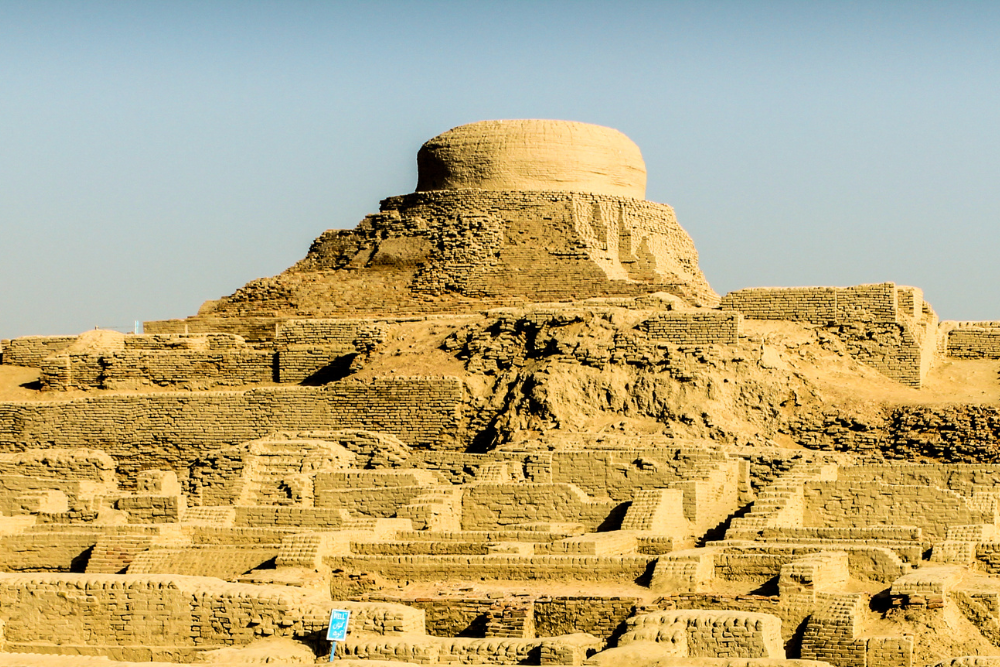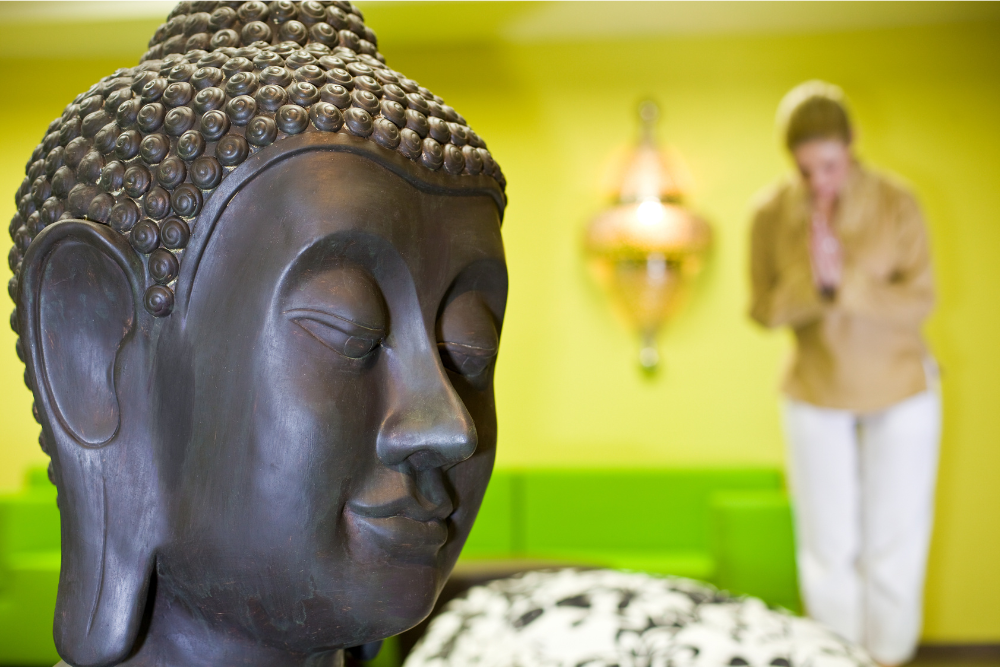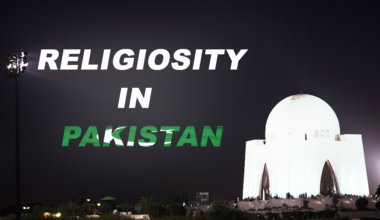A few days ago I visited the world-renowned petroglyphs (rock carvings) at Tamgaly, which is a UNESCO World Heritage Site. Set around the lush Tamgaly Gorge, amidst the vast and arid Chu-Ili Mountains, is a remarkable concentration of some 5,000 petroglyphs.
The main part of these petroglyphs belongs to the Bronze Age. Distributed among several complexes with associated settlements and burial grounds, they are testimonies to the husbandry, social organization, and rituals of pastoral peoples. Human settlements in the site are often multi-layered and show occupation through the ages. A huge number of ancient tombs are also to be found including stone enclosures with boxes and cists (middle and late Bronze Age), and mounds (kurgans) of stone and earth (early Iron Age to the present). The central canyon contains the densest concentration of engravings and what are believed to be altars, suggesting that these places were used for sacrificial offerings. While I stood on the ruins of Tamgaly, my mind tried to reconstruct the past that lies wrecked here. I realized that decline and destruction are wrought large on everything we behold, as Shelley explains in his timeless short poem ‘Ozymandias’. The last three lines of this sinuous sonnet are worth repeating here:
“Nothing beside remains. Round the decay Of that colossal wreck, boundless and bare The lone and level sands stretch far away.”
As I reflected on these monuments of human history in Central Asia, my mind wandered back to South Asia – the place of my origin. I have had the good fortune of visiting many of the archaeological sites in Pakistan, which afford us a vivid glimpse of how the people in Indus Valley lived a few thousand years before the Christ. A visit to Mohenjo-Daro, Harappa, or Taxila is an extraordinary reminder of the sheer unreality of time and the vanity of man.

The ruins scattered across Pakistan bear testimony to how the people in India lived fifty centuries ago. In fact the word India is derived from ‘Indos’ (Indus) in Greek and the region fed by Indus and its tributaries was the then existent India. The vast Indo-Pakistan mainland, with its fertile alluvial plains and hospitable climate, beyond the high ramparts of mighty Himalayas presented itself as new world to those who ventured here from the North or the West. These adventurers from barren and hostile Iranian and Central Asian Plateaus must have taken great delight in discovering and settling down in this new world. They descended from all directions, from Central Asia to the extreme West. In that context the arrival of the Aryans some 4,500 years ago is only a recent phenomenon. Even though the historical evidence does not offer much precision about the races that inhabited India prior to the Aryans, it bears out that the area covered by this civilization was twice that of Old Kingdom Egypt and nearly four times that of Sumer and Akkad together. The material culture over this entire area was amazingly uniform and even more remarkably uniform in time. As per Ronald Latham: “The seven levels excavated at Mohenjo-Daro (perhaps covering the period from 3,000 to 2,500 B.C.) are scarcely distinguishable, except that the later buildings are inferior to the earlier ones. It is evident that a civilization so highly developed, widespread, and stable must have a long past behind it, so that it may quite conceivably be older than either the Egyptian or the Mesopotamian.” Latham goes on to explain that the Indus people used wheeled vehicles, cultivate many plants and crops, and domesticated various animals.
The earliest record of human history in India, as elsewhere, introduces us to the wars of dominance entailing the conquest of the weak by the strong that has ever since remained the fate of the human history. Appreciating some of the exhibits revealed by excavation at Taxila, one feels as if it was only yesterday that Alexander crossed the Indus on a bridge of boats just above the confluence of the Kabul River. As the ancient Indians were averse to recording the annals, we have to look up to Greek historians for authentic accounts of the major events in the history of ancient India. From them we also learn a lot about the interaction of ancient Iranian and Indian cultures since the time of Cyrus (558-529 BC) whose empire extended to the Punjab and survived till the end of Darius.
It is difficult to determine the religion followed by the Dravidians, who lived here before the arrival of Aryans, thus making it tough to examine various phases of the religious development that eventually climaxed in the literature of Vedas. What we do know, though, is that the Dravidian cults left a mark on the early life of India. The reverence of idols and the worship of deities, mostly females, hark back to Dravidian influence. Then come Gautama Buddha and his creed. Humanity owes immense gratitude to Buddha who, in the Orient at the least, was the first person to focus man’s attention on the vital question of his personal salvation and deliverance. In bringing philosophy down from the clouds to hearths and households of men, Buddha did for India what Socrates did for Greece. Though so little is known about the life of Buddha that it becomes difficult to sift history from legend and mystery, the religious significance of his mission –as accepted and preserved by Buddhist scholars- cannot be underestimated. After receiving illumination under the Bodhi tree for 44 years, he went about preaching as his disciples garnered his teachings directly from the Master himself. Buddha’s greatness comes through in the impatience he showed towards meaningless metaphysical questions –nurtured in the ancient Indian religious thought and creed- that had become the staple commodity in the age he had come to redeem. He refused to answer these questions and thus spoke: “I have come to deliver you from sorrow, from suffering, and from pain. What matters it to you to know all that is implied in the solution of the problems of creation, of the reality of God, if you are not properly directed on just the one thing that counts, namely, your escape from the wheel of life.” And he set about urging people to practice virtue in order to disentangle themselves from the cycles of birth and death.
The path led the Master to Peace, to Love, to Knowledge, to Illumination, to Nirvana. What the Master meant by Nirvana has been the subject of much debate. To most, however, it is a state of man’s Being where he resides in peace and contentment. Buddha was a great seer who not only delivered the individual from the peril of worldly suffering but also liberated those who came to believe in him from the dogma of the ancient religious thoughts of which the Brahmans of his day were the exclusive custodians. All this denial was the historic necessity to focus Man’s mind on the practical task of his being able to fight the dogmatism, the formalism, and the rigid ritualism that pervaded pre-Buddhism religious teachings. Buddha did exactly in India what Christ was to do four centuries later to wean man’s mind away from selfish ends by highlighting the utter unreality of this life. It’s a pity that following the end of Asoka’s regime, Buddhism disappeared from the Indian mainland and found refuge in bordering lands. Brahmanic revival meant the disappearance of Buddhism. However, the archaeological treasures in Pakistan continue to articulate the force of Buddhism.

Although wedged firmly between the forces of life and death, Man often becomes unmindful of his real place in the scheme of things. He then walks insolently on earth instead of learning to tread softly and humbly. The world is a theatre of time that perennially announces to man the value of humility. As Somerset Maugham explains: “All sensible people know that vanity is the most devastating, the most universal, the most ineradicable of all the passions that afflict the soul of man, and it is only vanity that makes him deny its power. It is more consuming than love.” Jonathan Swift elucidated it even better: The strongest passion allows us some rest, but vanity keeps us perpetually in motion. ‘What a dust do I raise’, says the fly upon a coach wheel and ‘at what a rate do I drive’ says the fly on the horseback.” The vestiges of our history scattered all across Pakistan and India remind us to let humility take possession of our soul whenever we contemplate the inevitable end of all things. A culture that placed emphasis on humility is not only a heritage we must preserve but also India’s remarkable gift to the world.







